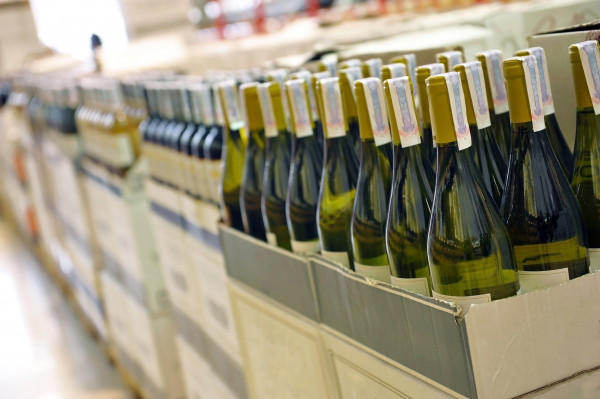SUNRAYSIA’S wine industry has copped a multi-million-dollar blow after China this week confirmed it would slap a massive 218.4 per cent tariff on all bottled wines over the next five years.
Australian Wine and Grape chief executive Tony Battaglene said the door was now “effectively shut” on the lucrative China market until 2026.
“We knew this was coming, so it’s no great surprise,” Mr Battaglene told Sunraysia Daily.
“For most of our producers, it will be a 218.4 per cent tariff. There are only 24 (out of an estimated 2361) wineries around Australia that will pay less than that.
“It does effectively shut the door in China for the vast majority of our producers.
“There’s basically been very little wine that has been exported to China over the last three months.”
In fact, the value of wine exports to China crashed to less than $1 million in January, down from a high of $164 million in October 2020.
Last year Australia exported 729 million litres of wine, valued at $2.8 billion. The top destination market was mainland China, accounting for 39 per cent of the exports by value.
Australia’s dispute with China – which imposed the tariff whack as part of “anti-dumping measures” – is likely to head to the international umpire, the World Trade Organisation.
Mr Battaglene said local producers were now looking to diversify into other markets.
“Unless there’s a thawing of bilateral relations, we’re planning for a five-year hiatus in China,” he said.
“People have been talking about the new growth market being India for us, but that’s a long-term play.
“There’s still more scope in the United Kingdom, United States and Canada. But the real growth will probably come in south-east Asia – countries like Korea, Vietnam, Thailand and Japan.
“When the reality of the China shut-out hits home, people will struggle for a bit.
“Grape growers will come under a lot of pressure this year because of pricing pressures. This is where the immediate pain will be felt.”
Latest forecasts are for grape prices to fall from last year’s $694 per tonne to $540 per tonne this year.
“The major reason for this is the loss of China as a significant export market for Australian wines,” the Australian Bureau of Agricultural and Resource Economics and Sciences said in its March quarter report.
“The recovery of the world economy in response to vaccine rollouts for COVID-19 is expected to provide a modest boost to demand for Australian wine, lifting exports and wine grape prices in nominal terms towards the end of the projection period.
“However, wine grape prices are still expected to remain below $600 per tonne over the projection period to 2025-26, about 15 per cent to 20 per cent lower than in 2019-20.”
Treasury Wine Estates (TWE), makers of Penfolds, Wolf Blass and Lindeman’s (which has a winery at Karadoc), said it would implement a series of measures “to reduce the impact of the tariffs”.
The nation’s biggest wine company will reallocate its popular Penfolds Bin and Icon ranges from China to other key luxury growth markets around the world after revealing that profits from its China business fell 37 per cent to $78.8 million over the six months to December 31.
In a statement to the Australian Stock Exchange this week, TWE said it would cop a 175.6 per cent tariff to its Australian wines in containers of two litres or less imported into China over the next five years.
“The duty rate is consistent with provisional measures,” it said. “TWE is executing a detailed response plan to maintain the long-term strength of its business model and brands, with benefits expected to progressively reach their full potential over a two to three-year period.”
Trentham Estate had been sending six containers of bottled wine each year to the China market, which comprises 15-20 per cent of its business.
Managing director and chief winemaker Anthony Murphy is planning to keep expanding Trentham Estate products into other burgeoning European markets.
But a Chinese-owned winery in Sunraysia will dodge paying the hefty new tariff for the product it ships back home.
Weilong Wines, which has a new $85 million production site about 8km south-east of Red Cliffs, sends most of the wine it produces from three Victorian farms to China in 24,000-litre bulk containers.








